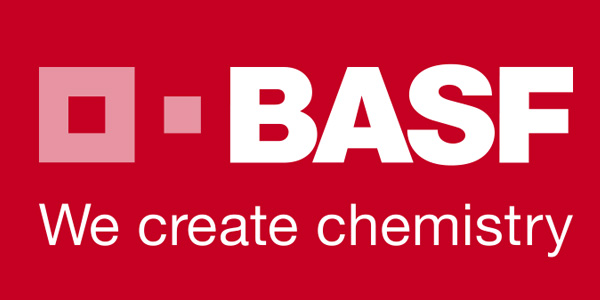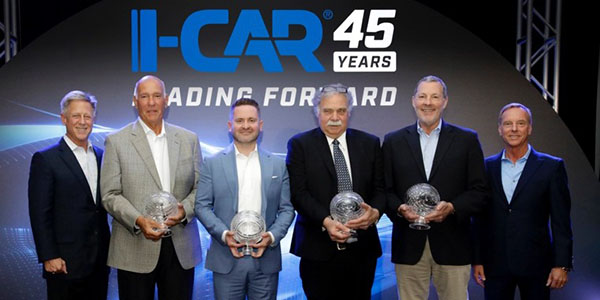BASF announced that its latest “BASF Color Report for Automotive OEM Coatings,” a global analysis of the color distribution in the 2018 automotive market, indicates that the achromatic colors – white, black, gray and silver – still dominate the roads. According to BASF, those colors cover almost 80 percent of cars produced worldwide. White is the most popular color among them. More than every fourth car in North America and nearly every third vehicle in Europe is painted white, while in Asia Pacific it is more than every second car. Silver’s popularity decreased slightly in comparison to the previous year.
Among the diverse range of color shades, blue is the most popular, followed by red. These chromatic colors tend to be more popular within the smaller vehicle segments, such as compact and subcompact cars. The overall amount of chromatic hues drops off significantly in the larger segments. Here, there was a considerable increase in black and white compared to the previous year.
Effects Create New Color Variations in Europe
Nearly every fifth car in Europe is painted gray. The color replaced black as the second most popular color. Buyers can choose from more than 110 variations ranging from light gray to dark metallic anthracites. Blue offers even more options. Approximately 140 shades make blue the region’s most diverse color space. With a share of 11 percent, it overtook silver in 2018, becoming the fourth most desired color in Europe.
A metallic or pearlescent effect also significantly contributes to the unique look of a car. In 2018, two thirds of all vehicles were finished with an effect coating. The larger the car, the more likely it was painted with an effect. Dark colors such as black and gray are mostly formulated to have a metallic effect, whereby lighter colors are primarily solid shades.
“The landscape of automotive coatings effects evolves continuously and is shaped by new and inspiring ideas,” said Mark Gutjahr, head of Automotive Color Design Europe at BASF’s Coatings division.
White is Most Popular in Asia Pacific
White is more popular in Asia Pacific than in any other region. Approximately 53 percent of all new cars are white. The color’s popularity grew significantly in comparison to the previous year. Among chromatic colors, red is still the most popular choice. Blue, however, is closing the gap. An interesting observation is that brown remains especially popular with SUVs but has shown signs of slowing down, indicating that its importance in this segment may have passed.
Car buyers in Asia Pacific are increasingly connecting their color preferences to their attitudes and lifestyles. For example, metallic and sparkling blacks have risen in demand across several body segments. Even in subcompact cars, silvers and grays with dazzling effects are becoming more common. This can be seen in the Chinese market, where a broader palette of colors has emerged.
“The diversity of chromatic colors is evident, with red, blue, yellow, brown and gold hues appearing in almost every segment,” said Chiharu Matsuhara, head of Automotive Color Design Asia Pacific. “Chinese consumers readily display their coloristic tastes more so than in the past.”
A Look into the Future
In 2018, the achromatics remained the most popular automotive colors for North America, accounting for roughly 75 percent of market production. Among the achromatic colors, white maintains its leading position. Besides the achromatic shades, consumers continued to demonstrate a growing affinity for red, specifically within the pickup and sports car segments. The diverse blue color space remained nearly the same compared to the prior year.
Over the last 10 years, crossover utility vehicles (CUV) have emerged as a dominant vehicle segment in North America. CUVs combine the qualities of sport utility vehicles (SUVs), like safety and driving convenience, with other benefits such as fuel efficiency and therefore offer appealing features to a wide array of drivers. White is the most popular color in this segment, followed by black and gray. Blues and reds are almost equally desired by car buyers.
“In coating large surfaces for the CUV segment, the industry looks to bring a suitable visual expression of the vehicle’s perceived use and link it to the brand image,” said Paul Czornij, head of Automotive Color Design for BASF North America.
Trend Competence and Innovative Color Concepts
BASF states that its Coatings division has an excellent understanding of what is trending in materials and colors, and uses this to predict which colors will play a key role in the future automotive market. Every year, the Coatings division’s designers create Automotive Color Trends, an innovative collection of 65 new colors based on extensive research and in-depth analysis of global trends and cultural shifts that will influence automotive colors three to five years into the future.
Color and Sustainability
Integrated into its color design innovations, BASF offers a range of sustainable coatings solutions for the automotive industry. Among these are coatings that enable a shortened application and curing process, which can reduce CO2 emissions by up to 20 percent, waterborne basecoats that meet strict global regulations to minimize the volatile organic compound (VOC) content, and coatings with a temperature management functionality whereby the car surface does not heat up as much as conventional coatings, minimizing the heat build-up in interiors.















